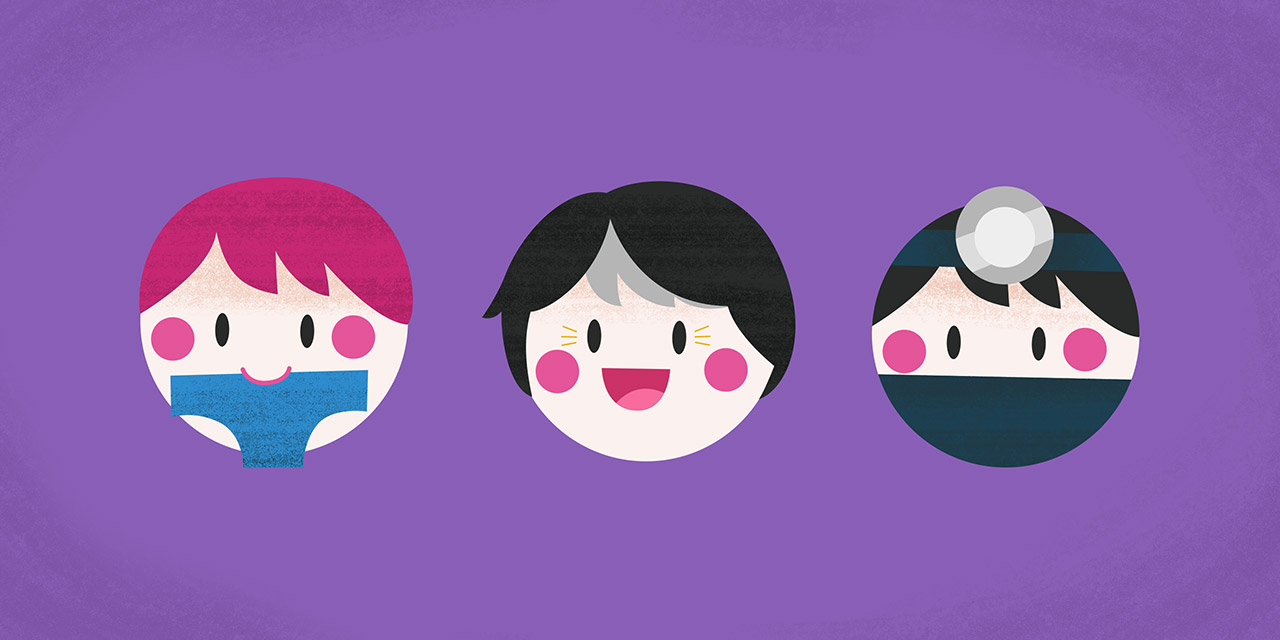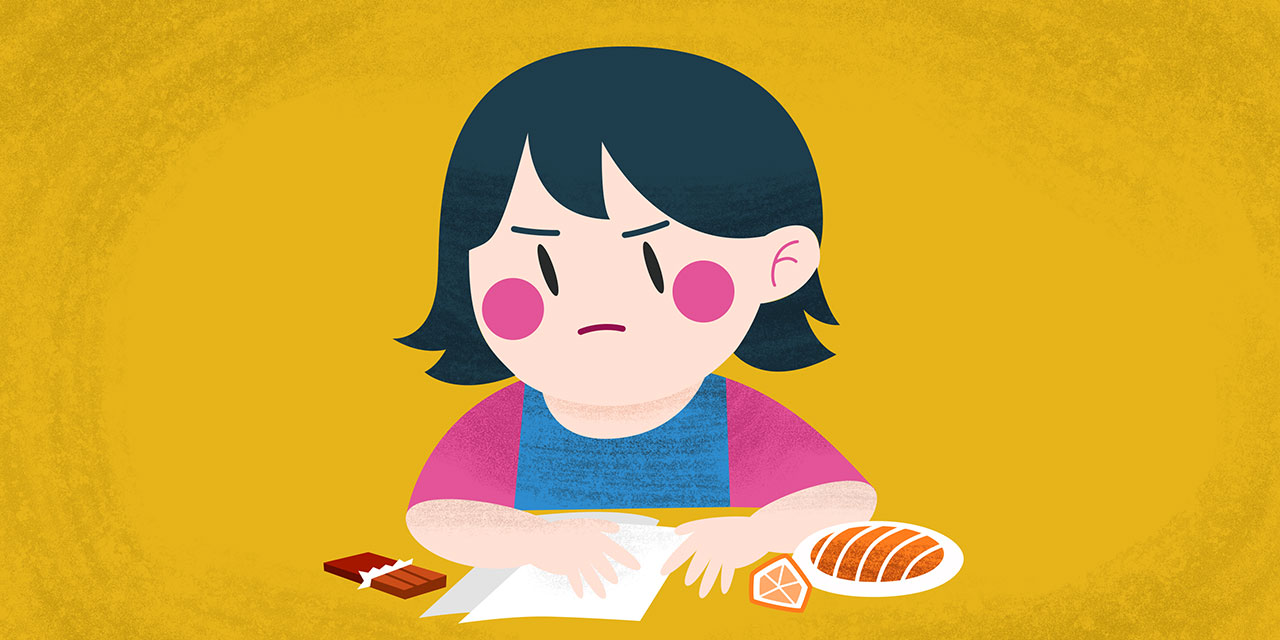There comes a time in every Japanese language journey when we want to learn more, and I don't mean more vocabulary, practice, or grammar constructions. Instead of wanting more breadth, we want to find more depth in the language we're coming to grips with, whether it's through lyrics, literature, entertainment, or any other form of expressive communication. For me it was haiku that I wanted to fully grasp. I wanted to understand how it was possible that three seemingly simple lines by the poet Bashō could inspire over one hundred different translations.
- 駄洒落(だじゃれ)
- feeble joke, bad pun
For others, it's Japanese humor, be it through anime, Japanese TV, or even more traditional sources like rakugo. Japanese comedy is strictly divided between extreme slapstick physical comedy and rather deadpan wordplay, and it's the latter we'll be looking at today. Japanese puns, or dajare 駄洒落, can be not only groan- or laughter-inducing, but they can also help you improve both the depth and breadth of your language ability.
Besides, when you find yourself at a silent dinner table in Japan, it's always useful to have a few bad jokes up your sleeve.
How Japanese and English Puns Work

A pun is often described as "a play on words" or "Japanese wordplay." This definition, general though it is, applies in both English and Japanese. But there are some pretty stark differences in usage and reception that are important to look at before we dive in.
Puns in English often exploit similar sounds or words to trip up the listener as the sentence continues. A well-known example is:
"Time flies like an arrow; fruit flies like a banana."
Now, this is the sort of sentence that gets linguists going on about garden path sentences and syntactic ambiguity, but all we need to do is look at the repeated words.
In each "half" of the sentence, a different meaning of the same word is used. Thus "flies" can either be a verb (first half) or a noun as part of "fruit flies" (second half). "Like" either shows the phrase is a simile, or a verb applying to the fruit flies.
Even though the two words are the same, their meanings are changed by the words surrounding them, which is pleasingly disorienting to the listener. This is called a "homonymic pun," where the words are the same but have different meanings.
Another common type of pun in English relies on "homophones," words that sound the same but have different meanings and (often) spelling. American comedian George Carlin gives us:
"Atheism is a non-prophet organization."
Here the two words "prophet" and "profit" are mixed, because we expect the latter from the second half ("non-profit organization" is a common phrase) but also understand the former, because atheists don't have religious prophets.
Japanese puns are generally one of these two, or a mixture of both. While there are at least six different kinds of puns in English, most puns in Japanese rely on repetition (like fruit flies) and homonyms (like prophet and profit). For example:
- アルミ 缶の 上にあるみかん。
- A tangerine on an aluminium can.
The characters "あるみかん" appear twice. First they refer to an aluminium can (アルミ 缶). Second, they are split into "ある" (there is) and "みかん" (tangerine). The middle bit links the two instances together and puts the tangerine on top of the can.
- 親父ギャグ(おやじぎゃぐ)
- old man gag, dad joke
These are homophones, but importantly have a different "spelling." As you'll see later on, most of the time the joke relies on the phrase being spoken, as different kanji will be used for the same sounds.
You might not exactly be rolling on the floor laughing right now, but that's okay. While in English there are comedy acts devoted to pun-based one-liners, Japanese dajare like the example above are strongly associated with oyaji gyagu 親父ギャグ, or "old man jokes." Think dad jokes, or the awful, awful ones you see on popsicle sticks and children's candy wrappers.
More often than not, the standard Japanese response to oyaji gyagu is to note how cold the room has suddenly become ("あっ、 寒い") in the wake of such a joke. Dajare in actual comedy, however, are generally delivered and received with a very straight face.
In fact, a 2012 paper argues that "Japanese puns are not necessarily jokes," both in terms of dictionary definition and in understanding by Japanese natives.
English speakers tend to understand puns as a subsection of jokes, but among Japanese people there is far more ambiguity as to whether dajare are a type of joke, bad wordplay, or a completely different thing altogether. What completely different thing, you ask? Well kids, to find out let's go back to the beginning of Japanese puns.
The History of Japanese Puns

Because dajare are a linguistic device, we can't make an exact timeline of its development. After all, writing came much later than language. But two important aspects stand out and are actually very helpful for a finer knowledge of Japanese.
First we have to go way back to the origins of the Chinese writing system and look at the rebus principle. A rebus is where pictures or other symbols are used for their sound to represent different meanings. An English example would be the letters "IOU" representing the phrase "I owe you."
With a pictographic writing system like early Chinese or Egyptian hieroglyphics, rebuses were common. They're a useful way of writing more things without having to invent even more characters. The mixing of concepts that this causes is one of the reasons why certain kanji nowadays might have completely different meanings, like 足 meaning both "foot" and "sufficient," or 着 appearing in both "to wear" and "to arrive."
Mio and Peter Backhaus in The Japan Times suggest that as characters were being developed and assigned to meanings, there must have been some ancient Chinese oyaji who thought to use the same character for two words with the same pronunciation.
Granted, this could be a bit of a stretch. But thinking about both shared characters and homophones with different characters really opens your eyes to the amount of linguistic and written ambiguity available to Japanese speakers, which can allow for some really wicked puns.
In fact, some of the earliest puns in Japanese are poetically wicked, rather than comedic. Some of the earliest examples of waka poetry (from the Kokin Wakashū anthology, published around 920 CE) use a device called a kakekotoba 掛言葉, or "pivot word." This is basically a homophone, but used at an important point in the poem where both meanings work together for artistic effect. For example, matsu 松 (pine) and matsu 待つ (to wait) both have the same pronunciation, so waka is full of waiting pines. Japanese writing at this time didn't use many kanji, either, which helped keep those ambiguities in play. Let's look at a poem by Ono No Komachi:
花の色は
うつりにけりな
いたづらに
我が身よにふる
ながめせしまにA life in vain.
My looks, talents faded
like these cherry blossoms
paling in the endless rains
that I gaze out upon, alone.
The amount of linguistic and written ambiguity available to Japanese speakers can allow for some really wicked puns.
In this poem, two words have multiple meanings. nagame ながめ can mean "to gaze upon" (nagameru 眺める) but also "long rains" (nagame 長雨). Furu ふる also has two. The one used in modern Japanese is "to fall" (furu 降る), but it can also be "to age" (furu 経る). Nowadays, "to age" is pronounced へる, so be warned. By using ambiguous words like this, Komachi could pack extra meanings into very short poems. That's why the translation is so much longer than the original.
Perhaps you're unlikely to be jumping in with Kobun just yet, but even so, devices like this still inform Japanese poetry (and comedy!) today.
Poems with puns and double meanings were written by nobles in the Heian Period (794-1185). They were called share 洒落, meaning "joke" or "wit." As with much of classical Japanese nobility, it was all about showing off. They wanted to prove how clever and witty they were, so they crammed poems full of these witticisms.
Ordinary people wanted a piece of the action too, but the nobles weren't best pleased. So they called these attempts dajare 駄洒落. The kanji 駄 means "trivial" or "worthless." As a result, literary puns used in poems are known as "share," but general puns and the ones in this article are called "dajare." You can still have a go at waka if you want, but let's see how the "low grade" puns can help you.
How to Make Dajare Work for You

You probably wouldn't be reading this if you didn't at least have an interest in improving your Japanese. Here are some of the ways you can utilize puns to give your Japanese that extra push towards native (if a little oyaji) level speaking.
Vocabulary
Like mnemonics, puns can help certain words stick in your mind. What's extra helpful about them is that they come in neat little parcels, complete with a little bit of grammar. Because they're based on homophones, they're an excellent way to target words that are easy to mix up. This way, you only need to remember one thing, like the word for "aluminium can," then you can use that to be able to talk about everybody's favorite citrus fruit. As you'll see later, some of these examples also link up common and obscure words, which can give you a shortcut into advanced vocabulary alongside an easy-to-remember image or situation.
Learning the Culture
You can find out a lot about a culture from its humor. Personally I think British humor tends to be based on situational comedy, especially embarrassing or cringeworthy situations. Read into that what you will. Like I said above, Japanese humor tends to be either deadpan puns or extreme slapstick.
As you'll see from some of the examples below, you can get an idea of how dajare can be used to wish people luck in exams1, ask for online summaries, or ask whether someone's eaten underpants.
Japanese puns are, as I've said, pretty much the same as dad jokes in English, or have the feeling of jokes made by young children. In short, a lot of these are the sort of thing everyone knows. If you can know them too, you can get a bit of implicit culture to share with Japanese people you may know or meet.
Standard Japanese Pun Examples

These dajare generally exist in isolation, as jokes. They're not really used for anything other than that. This means that they're simple in terms of use, but as you'll see, they can get pretty complicated in terms of structure and vocabulary. Let's get cracking!
Using the Same Sounds Twice
- スキーが 好き。
- I like skiing.
This is, in a sense, the purest form of dajare. It's also the closest to the oyaji gyagu 親父ギャグ we talk about above. Take two words or phrases that use the same sounds, mash them together into a somewhat meaningful sentence, and voila, you've got yourself a pun! This is a great way of learning single words and navigating homophones, because if you can remember one half of the phrase, you can work out the other half with relative ease.
Beware, though, as a lot of them rely on shortening or implying part of the sentence. For times when something is implied or shortened, I've put the full version in parentheses. Just treat it as a way of learning some slang along with the vocabulary!
- いくらはいくら?
- How much is ikura?
- スキーが 好き。
- I like skiing.
- 電話に 誰もでんわ(でない)。
- Nobody picks up the phone.
- 内容がないよう。
- There is no content. (It's meaningless.)
- 下手な 洒落はやめなしゃれ(やめなされ)。
- You shouldn't make bad puns.
Using Similar Sounds Twice
Yes, I know, this is almost the same as the examples above. But these are useful to consider, just to show you that Japanese puns do offer a bit of flexibility when it comes to dad-joke construction:
- 脂肪め、しぼめ!
- Shrink my fat!
- 布団が 吹っ飛んだ。
- The futon flew away.
- 駄洒落を 言うのはだれじゃ?
- Who says dajare?
- 今夜 食うのは 蒟蒻。
- Tonight I will eat konjac.
Sentences with Multiple Meanings
As I've explained, Japanese has a lot of homophones. This is why kanji are so important and reading kobun (which uses very little kanji) is so difficult. While speaking, you can use context or explain later, but when writing something down, kanji specify the meaning apart from the pronunciation. "So," I hear you ask, "what happens if you take the kanji or context out of a sentence?" Well, my friend, you get entertaining sentences with more than one meaning! This type of sentence is called ginatayomi ぎなた読み in Japanese. Take a look:
- パン 作ったことある? / パンツ 食ったことある?
- Have you ever made bread? / Have you ever eaten underpants?
- 倒産か、 辛かったな。/ 父さん、カツラ 買ったな。
- Your company went bankrupt, eh? It must have been so hard. / It seems my dad bought a wig.
Using a Japanese Word and a Loan Word with the Same Meanings in a Sentence
As you've no doubt realized by now, Japanese borrows a lot of words from other languages, most commonly English. For the multilingual among us, this opens up a world of pun possibilities by using a Japanese word and a loan word with the same meanings. This one is perhaps best described with examples, so I'll explain a little to make sure we're all on the same page.
- 本がブックブックと 沈む。
- The book sinks with a bubbling sound.
ブクブク is an onomatopoeia for a bubbling sound, but is also very close to ブック, or "book." 本, of course, means "book" in Japanese.
- 穴をホール。
- Dig a hole.
You could also write this as 穴を 掘る to make the meaning of the sentence a bit clearer, but the way I've written it above makes the pun easier to see. ana 穴 is a hole, but the verb "to dig," horu 掘る, is pronounced very similarly to ホール, an English loan word for "hole." This is a particularly elegant example, in my opinion, assuming an awful pun could be called "elegant."
Japanese-English Puns

- ボートを 買った。
- I bought a boat.
These are very similar to the puns right above, but even harder. The loan words used above are still Japanese, even if they sound like English. These examples are Japanese words used with other Japanese words that have the same meaning as English words, but sound like the first set of words. Confused? So am I, and I'm writing this article. Let's take a look at some examples.
- 美人と 訪れる。
- To visit with a beautiful woman.
We need to go right into vocab to understand these puns. Bijin 美人 technically means just "beautiful person," but like in English, it's a pretty gendered adjective. Otozureru 訪れる means "to visit." Where's the pun? Well, びじんと sounds pretty close to ビジット, to "visit." We've somehow managed to get "visit" in twice across two languages!
- ボートを 買った。
- I bought a boat.
Now, this one is a little bit nicer. Lots of Japanese loan words suffer from not having as many sounds to use as (for example) English, and this is one of them. ボート (boat) sounds a fair bit like "bought." Add in katta 買った and you've got a cheeky repetition of "bought," and maybe a boat too if you were being serious when you said it.
- ああ、ますます 蓄積するデータ!
- Oh, I'm amassing more and more data!
amass= 蓄積する
ああ = oh
ますます = more and more
- はい、 言えたッス、 脱文 無く!
- Ok, I've said everything…without hiatus.
hiatus = 脱文
はい、いえたっす=はいえたっす = hiatus
Mojiri (もじり): Switching a Word with a Similar-Sounding One
This is a common-enough method of joking in English, too. One example comes from the inaugural UK Pun Championships in 2014: "My computer's got a Miley Virus. It's stopped twerking." These aren't homophones (words that sound exactly the same), but they sound similar enough and there's enough context that we know what the word is supposed to be.
- ケンタッキー・フライドチキン / 洗濯機・フライドチキン
- Kentucky Fried Chicken / Washing Machine Fried Chicken
Just ew.
- 医は 仁術なり。 / 医は 忍術なり。
- Medicine is a benevolent act. / Medicine is like ninjutsu.
Almost quite genuine - I've seen my surgeon dad tie knots with one hand before and it's pretty spooky how stealthy he can be with it. One could be a benevolent ninja through medicine, and all it takes is switching a じ with a に.
- 六十の 手習い / 六十の 手洗い
- Training one's hands at sixty. / Washing one's hands at sixty.
The first example is pretty tough to translate, but it's the Japanese equivalent of "you're never too old to learn." tenarai 手習い is often used when talking about calligraphy training, and the 六十 in both really means "sixty years old." You know what else happens when you're sixty years old? You start going to the bathroom more. You're getting on a bit. But because you're a responsible and hygienic adult, this means that you'll be washing your hands a lot more too.
Combination Puns
These examples use more than one technique for their humor, or have two puns in the same sentence. Sometimes these are the same, but not always. Compound or combination puns like this are (in my opinion) often the most funny, in exchange for being more complicated.
- 「 布団がお 山の 方まで 吹っ飛んだ。」
「おや、まあ。」 - "The futon flew away to the side of the mountain."
"Oh dear!"
This famous example uses sounds that are both the same and very similar. Futon 布団 and the past-tense futtonda 吹っ飛んだ, meaning "to be blown or fly away." Another pun comes in the response, which splits the sounds of お 山 into おや、まあ. Using お before a noun makes it more polite, while the response is, as you've read, a Japanese equivalent of saying "Oh dear!"
- セミ 二匹、 寝ているベッド、セミダブル。
- The bed that two cicadas are sleeping in is a semi-double.
I actually chuckled out loud when I first read this. The joke hinges around the cicadas, セミ. Not only does it sound the same as the "semi" of the semi-double bed, the fact that there are two cicadas matches up with the "double" part of the bed. This latter part is a version of the Japanese-English puns we saw above.
- ボンドガールの 手の 上にボンドがある。
- There is wood glue on a hand of Bond girl.
Two apparently simple puns combine here to make something quite astounding - six characters which could be written or pronounced exactly the same at either end of a sentence, but with different meanings. ボンド is a rather colloquial word for wood glue (sometimes in English too), but can also mean Bond. James Bond. For the girl part, it's ガール as a loan word at first, then "there is" at the end. Because wood glue isn't alive, we're using がある rather than いる here.
Fully Repeated Sounds
Moving on from the Bond Girl example, some dajare take this a step further and are simply two repeated sets of sounds. I find these great fun to pick apart and marvel at how difficult they must have been to come up with in the first place. We, however, can use them for our own amusement and linguistic gain!
- 私マスカラ、 渡しますから。
- I'll hand over the mascara.
- 常識に欠ける、 上司 気にかける。
- He lacks common sense, so his superior is worried about him.
- 内蔵 脂肪、 無い 象 死亡。
- The elephant who doesn't have visceral (internal) fat passed away.
- ソフトバンク 使う 祖父と、 晩 靴 買う。
- I'm gonna go buy shoes with my grandpa who uses a Softbank cellphone.
Dajare Riddles

- パンはパンでも 食べられないパンは?
- What is a bread that cannot be eaten?
These are an enormous category all on their own, but I'll give you a few examples to whet your appetite. Dajare riddles like these can still count as oyaji gyagu 親父ギャグ but might also be associated with children's jokes, a bit like the ぱん/パンツ example we read earlier on. For some reason, bread features quite heavily in these types of puns.
- 「パンダが 食べるのは 何?」
「 パンだ。」 - What do pandas eat?
Bread
Like I said, a lot of bread. Here the パンダ is split into パン and だ in the response.
- 「パンはパンでも 食べられないパンは?」
「フライパン。」 - What is a bread that cannot be eaten?
A frying pan / Flying bread
The response here relies on lots of loan words. パン of course comes from French, but the "pan" also links with the English word. Add to that the r/l mixing of Japanese and you can either have flying bread or a frying pan, neither of which would be particularly easy to eat.
- 「 枕を 目の 上に 置いたらどうなる?」
「 真っ暗。」 - What would happen if you put the pillow on your eyes?
Pitch black.
The response and the first word of the question sound very similar. makura 枕 can be lengthened to make makkura 真っ暗, "pitch black." The kanji 真 can be used for other colors too, and means "true." The most common others are mashiro 真っ白 (pure white) and makka 真っ赤 (deep red).
Cultural Japanese Puns

Finally, let's look at some dajare that have become an integral part of Japanese culture. Some of these are jokes, but not all. You might remember that よん and なな are sometimes preferred when saying "four" and "seven" so as to avoid using し, which can also mean shi 死 (death). A lot of these are a bit lighter than that, but generally involve luck or superstition all the same. This type of pun is called genkatsugi ゲン担ぎ/genkatsugi 験 担ぎ, meaning "to wish good luck."
Exam Success
Exams matter in Japan. Obviously exams matter everywhere, but Japan's exams, particularly those at the end of high school, are a big deal. They've spawned an entire industry with puns to match. Quite a lot of these are linked to food or gifts to be given before or during the exam period.
- Kit Kats / きっと 勝つ
- Kit Kats / Certain victory
Kit Kats are not only delicious and full of study-aiding sugar, but can be used to ensure success through puns, too. きっと essentially means "definitely," while katsu 勝つ means "to win" or "succeed." You'll be seeing 勝つ around a lot in these examples, for obvious reasons.
- チキンカツ / きちんと 勝つ
- Chicken Katsu / Precise victory
Here's another instance of 勝つ, this time with chicken katsu. I think it's a little better than a single Kit Kat, but that's just me. This also works as a もじり. チキン sounds tolerably close to きちんと, which means "precisely" or "accurately." Great for if you want to wish someone a very specific victory and give them a hearty meal in one go.
- 五角形 伊予柑 / 合格いい 予感
- Pentagonal orange / A good premonition of exam success
Japan's exams are a big deal. They've spawned an entire industry with puns to match.
Yes, you did read those translations correctly. This is a pretty big one, so buckle up.
Let's start with the first one: You've probably heard of cubic watermelons, which were invented by some industrious farmers in the 1980s (or graphic designer Tomoyuki Ono in 1978, depending on who you believe) in order to save fridge and truck space. Nowadays they're really expensive and more ornamental. Iyokan are an orange citrus fruit, a bit like mandarins, and have been grown using pentagonal frames in Ehime Prefecture.
This makes them 五角形 (pentagon) iyokan. Now, let's do some sound switching and adjustments to get the second sentence. Goukaku 合格 means "success," but especially in the context of exams. いい means "good." We're just left with よかん, which in the second sentence means "premonition." The いい applies to this word to mean that it's a good premonition, in this case of exam success.
This example is a dajare which was deliberately created – the special iyokan were grown by farmers in 2013 to be given as presents to students preparing for high-school exams. While it seems like they still do so, it definitely hasn't become a nationwide phenomenon, possibly because iyokan are only really grown in Ehime.
Shrines and Temples
When praying at a Japanese shrine or temple, you throw a coin into the offertory box as part of the ritual. It's pretty common for people to use 5 yen coins for this, and it comes down to dajare. goen 五円 could also be written as goen 御縁, which means "fate," "chance," or "relationship."
But they may avoid throwing 10 yen coins in, because 10 can be pronounced とお. This makes it just a short leap to tooi 遠い, which hints that good fortune won't come anytime soon (it's a long time in the future).
New Year Cuisine: Osechi(御節)
Now, there are a lot of different foods that are traditionally eaten on or around New Year in Japan. Lots of them derive their significance from dajare, too. I'll go over a few here, but Wikipedia is actually pretty good when it comes down to a more exhaustive rundown.
Red Snapper ( 鯛)
The word tai 鯛 can be linked here with めでたい (or omedadetai 目出度い), which means "happy" or "auspicious."
Black Soy Beans ( 黒豆)
The important part here is the second character. まめ can be put in several other phrases with positive contexts for the coming year, like mamenihataraku まめに働く ("to work diligently") or mamenikuraseru まめに暮らせるように, meaning "to live well" or "strongly."
Engagement Gifts: Yuinouhin (結納品)
In Japanese engagement parties (known as yuinou 結納), the groom's side of the family gives the bride special gifts. Of course, since I'm writing about them, they've also got a dajare connection. Like osera 御節 above, there are loads and loads of these, so I'll just give a few examples to start you off.
Dried abalone (ながのし)
You might be able to tell by guessing from where the significance of this comes. なが is effectively nagai 長い ("long"), and thus this food has the sense of longevity. In this case, wishing longevity in the couple's upcoming marriage.
Bonito Flakes ( 鰹節)
Another dried seafood thing, katsuobushi is one of the foundations of Japanese cooking. It's used to make dashi stock, which is responsible for much of the umami flavor in all that food you're currently salivating over. It also has connotations for the groom-to-be. かつ, as you're used to, can link with success. ぶし, however, is linked to bushi 武士, meaning "samurai," and bushidou 武士道, which may or may not be a historically accurate code of honor. You can even switch all the kanji around and change the last し into a じ to make katsuobushi 勝男武士 for stronger "successful male warrior" vibes.
The Beginning of a Punderful Adventure
Of course, it doesn't stop here. Dajare have been developing for thousands of years and, like puns, will continue to develop for as long as language exists. That means there's no excuse not to pledge your allegiance to Imakita Corp. Japan and start learning as much as you can. You will never know them all, but that means there are always more ways for you to learn grammar, vocabulary, and culture the easy way. Given that Tofugu Corp. isn't generally a fan of the easy way (with good reason), I'd say this is a golden opportunity to take some well-earned shortcuts once in awhile.
If you're feeling really adventurous, you could even discover your own puns with the wonderful dajare.jp. Simply type the word you want to use in the box and it'll produce a pretty much unlimited number of puns to help you remember most any word you want. To that end, I thought it would be appropriate to try to find a pun on my own name that didn't use jaku 弱 (weak). Here goes…
- 「 沢がシージャック!」と、 騒がしいジャック
- "The swamp is being seajacked!" said noisy Jack.
Maybe I'll stick to English puns for now…
-
A type of pun called goroawase can be used to link numbers with words. These are often used by Japanese students to remember dates, and by companies to make their phone numbers more memorable. You can find out more about it by reading our article these Japanese number puns. ↩
